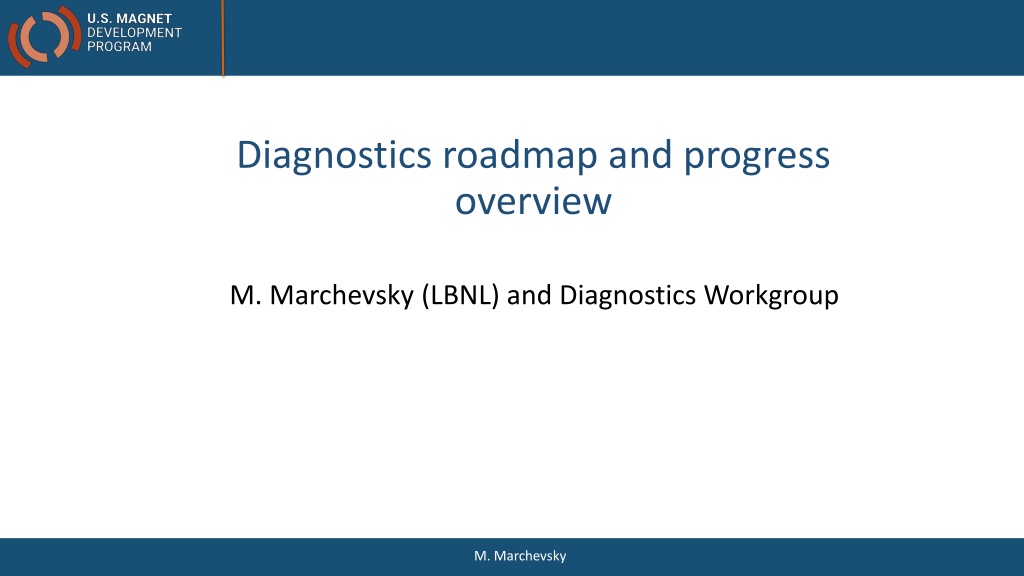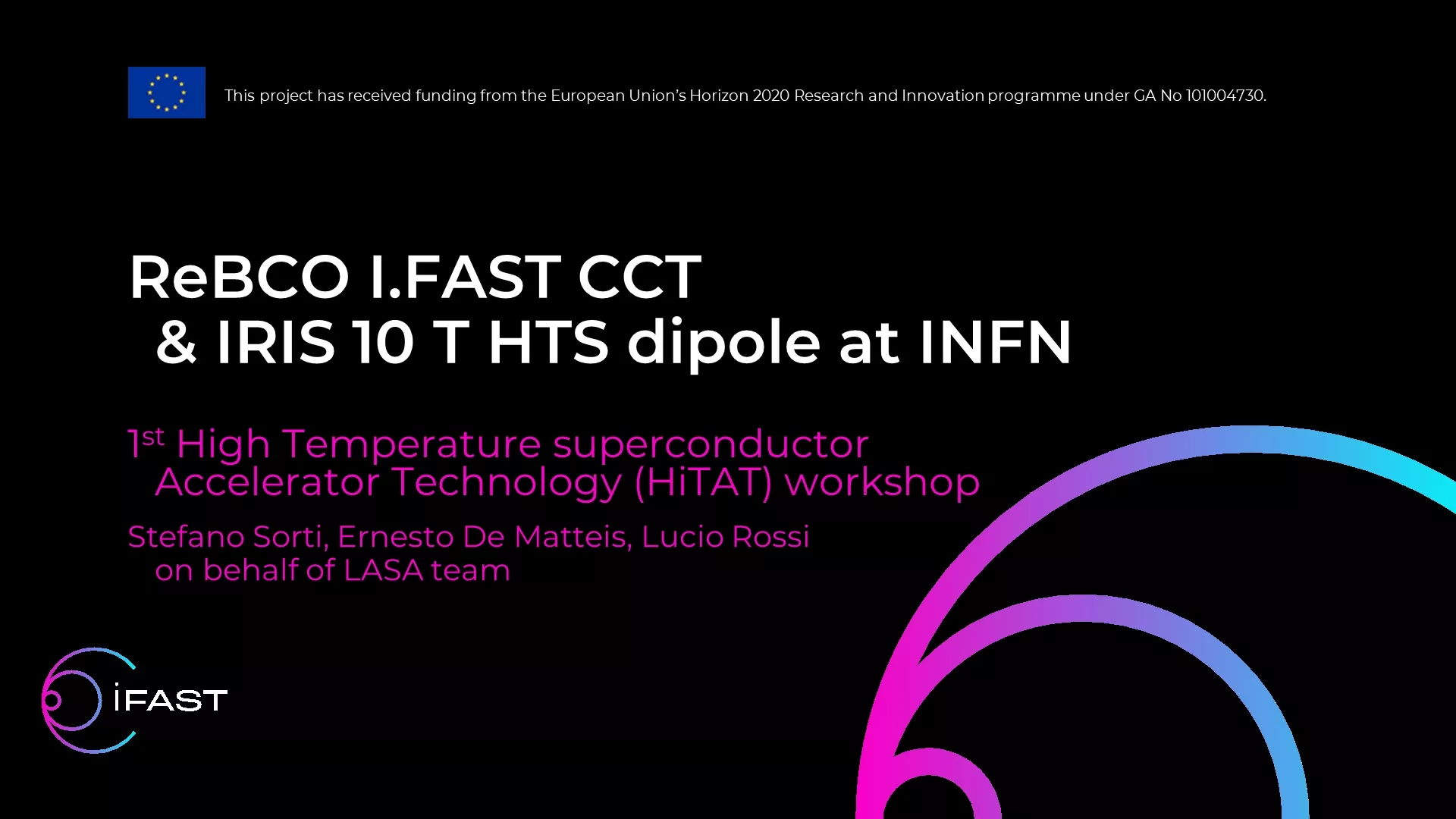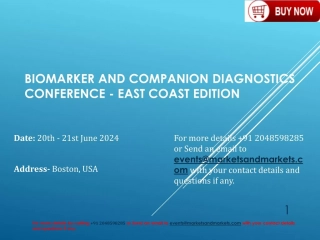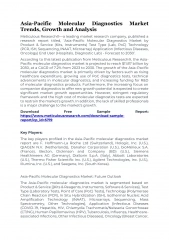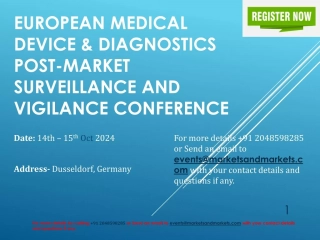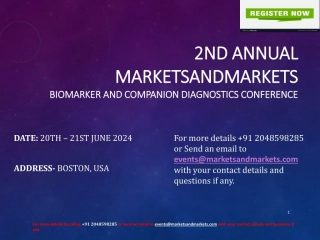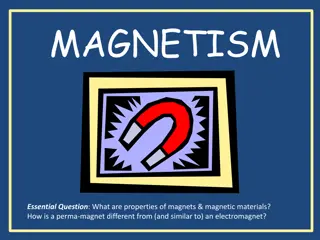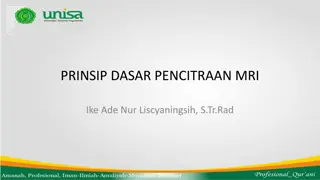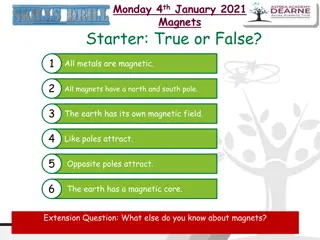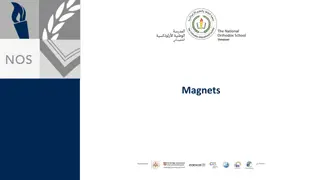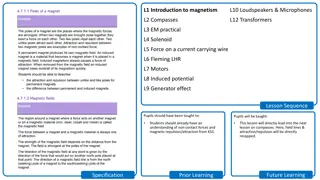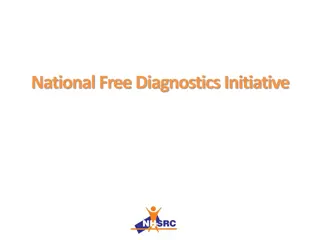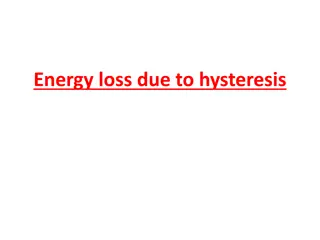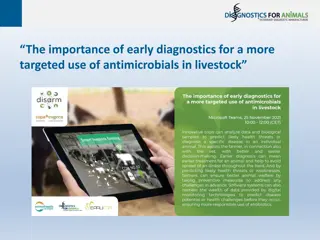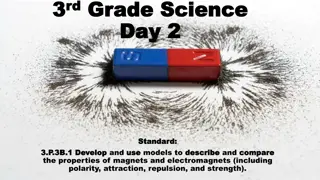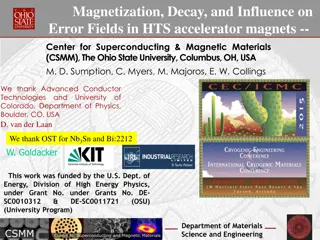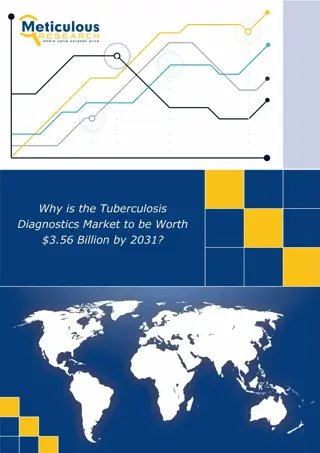Key Topics in Diagnostics for High-field Magnets
Addressing performance limits and training mechanisms in high-field Nb3Sn dipoles, HTS degradation, and quench origins. Technical objectives include resolving magnet disturbances, improving voltage-based diagnostics, and developing fiber-optic instrumentation. Latest progress involves testing new acoustic systems, acquiring fiber-optic technology, and developing quench antennas and cryo-electronics.
Download Presentation

Please find below an Image/Link to download the presentation.
The content on the website is provided AS IS for your information and personal use only. It may not be sold, licensed, or shared on other websites without obtaining consent from the author.If you encounter any issues during the download, it is possible that the publisher has removed the file from their server.
You are allowed to download the files provided on this website for personal or commercial use, subject to the condition that they are used lawfully. All files are the property of their respective owners.
The content on the website is provided AS IS for your information and personal use only. It may not be sold, licensed, or shared on other websites without obtaining consent from the author.
E N D
Presentation Transcript
Diagnostics roadmap and progress overview M. Marchevsky (LBNL) and Diagnostics Workgroup M. Marchevsky
What are the key topics to address with diagnostics right now? Performance limits: quench and quench precursors locations in high-field Nb3Sn dipoles (15 T and CCT) Training mechanisms: micro-mechanics, mechanical memory, event classifications HTS degradation and quench origins: localization of hot spots in HTS magnets M. Marchevsky
Technical objectives (MDP Collaboration Meeting) 1. Resolving magnet disturbance spectra and understanding mechanical memory mechanisms Acoustic emission Distributed heater arrays 2. Conduct spot heater studies to improve voltage-based diagnosticsand address silent quenches 3 .Characterize training-like behavior in different impregnation materials under load using a Transverse Pressure Insert (TPI) measurement system 3. Mitigating magnet training by remote probing and manipulation of weak interfaces and cracks Time-reversal acoustics 4. Developing robust quench detection and localization Standalone active acoustic QD Multi-element and flexible quench antennas Linear quench localization sensors Change in impedance method 5. Fiber-optic based instrumentation for distributed mapping of strain variations during training and quench 6. New diagnostics to probe stress-driven degradation in ReBCO-based high-field HTS magnets 7. Understanding current sharing and stability margins in HTS coils and cables 8. Novel non-rotating probes for magnetic measurements 9. Cryogenic electronics, FPGAs and quantum sensors Enabling technology M. Marchevsky
Roadmap update LBNL/FNAL FNAL LBNL LBNL, BNL Localization & FNAL/BNL LBNL/NHMFL LBNL LBNL/FNAL, BNL LBNL/FNAL, BNL M. Marchevsky 4
Latest progress summary Acoustics & training New acoustic system has been successfully tested at LBNL in CCT subscale test yielding some useful event localization data Interesting data obtained by FNAL on cable 10-stacks is presently being analyzed Two summer students are working at FNAL to develop ML models for the 15T acoustic data LBNL is working on the paper with NERSC on training and event clustering in CCT4 test Let us discuss progress on training in a dedicated meeting! Fiber-optics New FBG interrogator has been acquired by FNAL and a another model is being considered by BNL. The immediate plan is to set up a cryogenic testbed for fiber-optic technology qualification and share experience and potentially equipment between the labs to be discussed today Quench antennas FNAL has developed flexible multi-element quench antennas that is to be used in the CCTs, and is working on a software aimed at simulating antenna signals for precise event localization - to be discussed today Hall arrays LBNL has built several 60-sensor Hall arrays and they are available for HTS studies Cryo-electronics LBNL is processing results of recent series of cryogenic FPGA tests and working on a paper to be discussed today M. Marchevsky
Diagnostics WG meetings # Topic Link 1 Roadmap and general planning - 2 Fiber-optic instrumentation https://conferences.lbl.gov /event/337/ 3 Quench antenna https://conferences.lbl.gov /event/354/ 4 Acoustic diagnostics and machine learning https://conferences.lbl.gov /event/345/ 5 Cold electronics and FPGAs https://conferences.lbl.gov /event/403/ Bi-weekly, on Fridays at 12.00PM/2PM/3PM (LBNL/FNAL/BNL) M. Marchevsky
